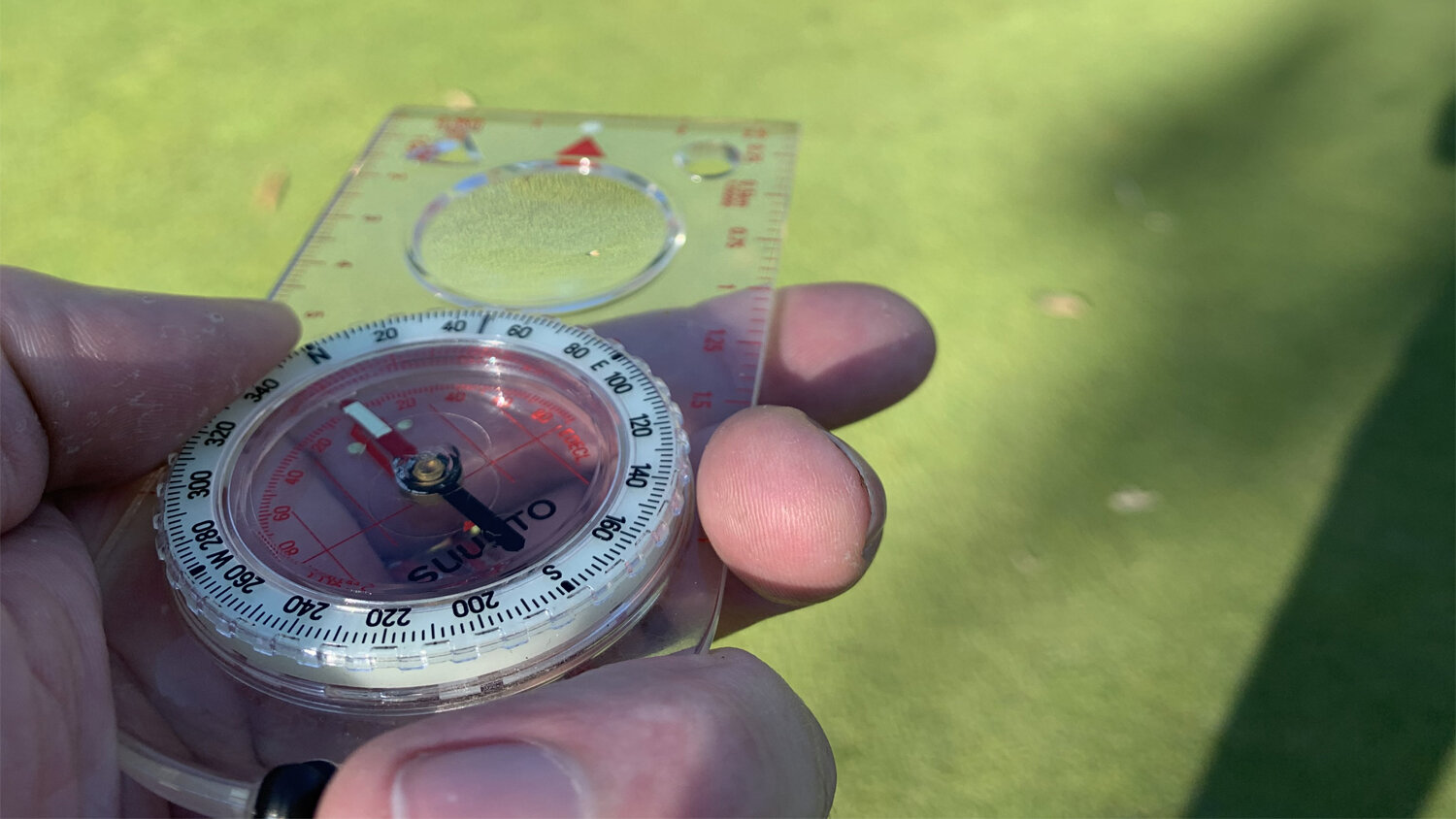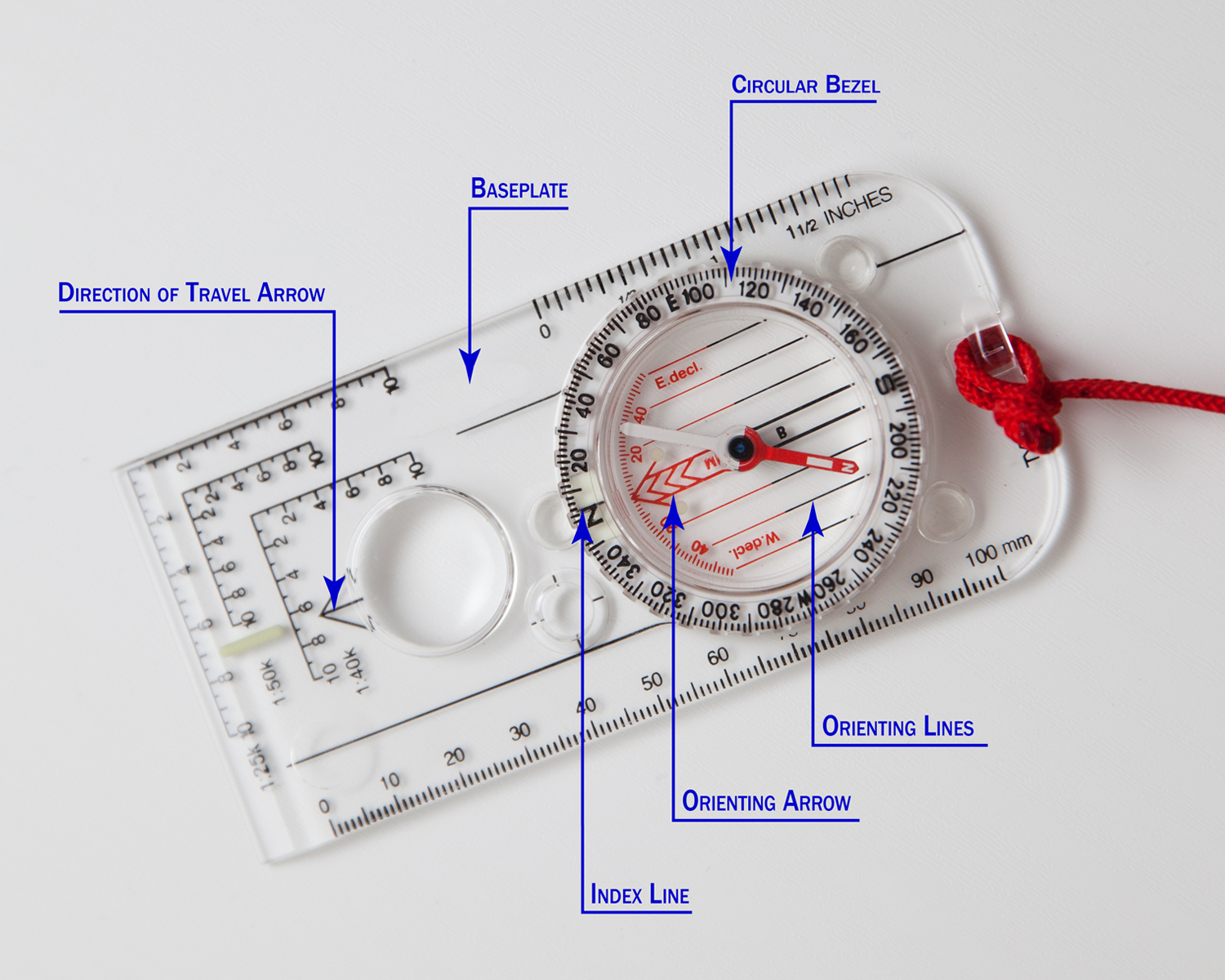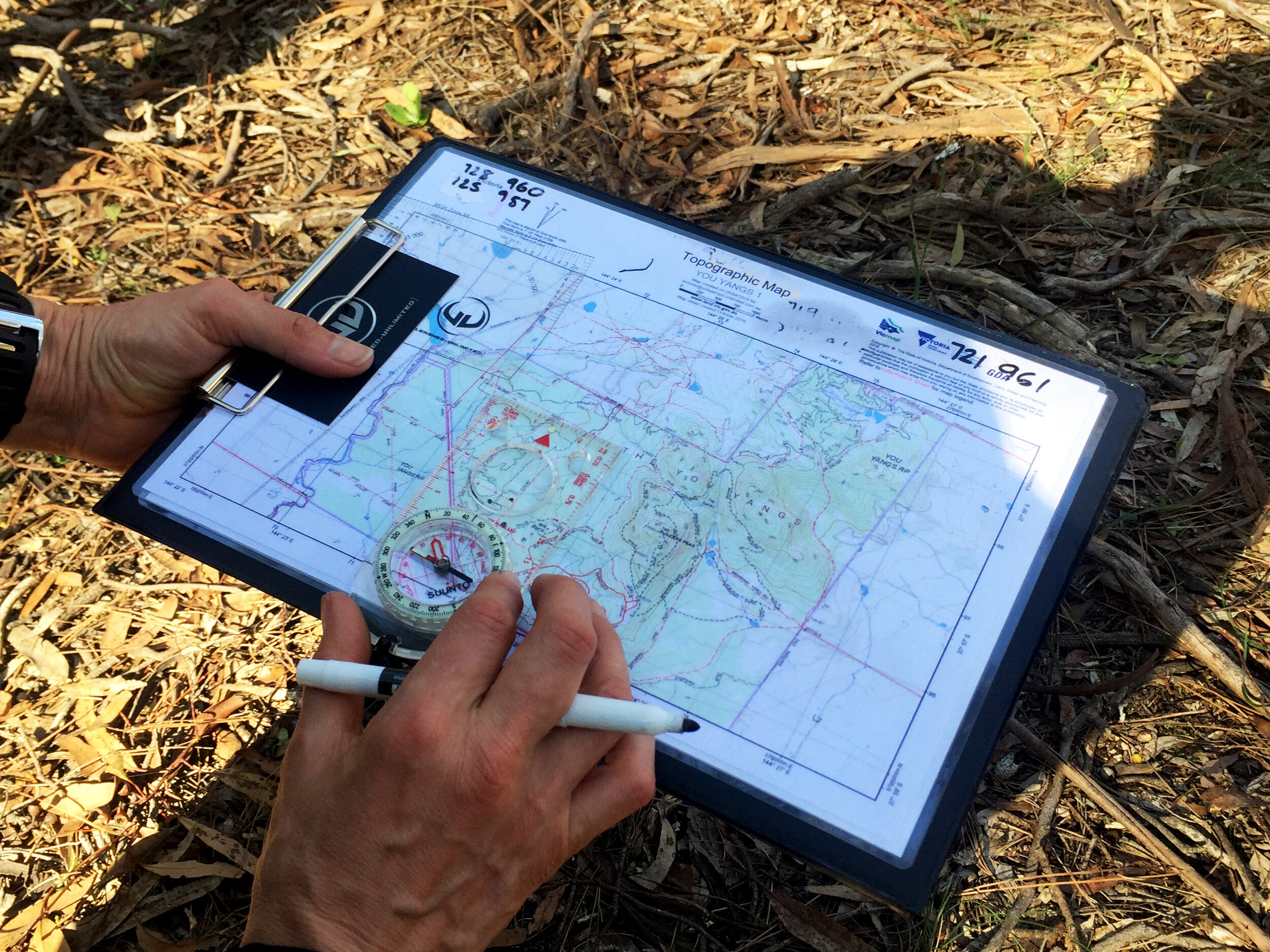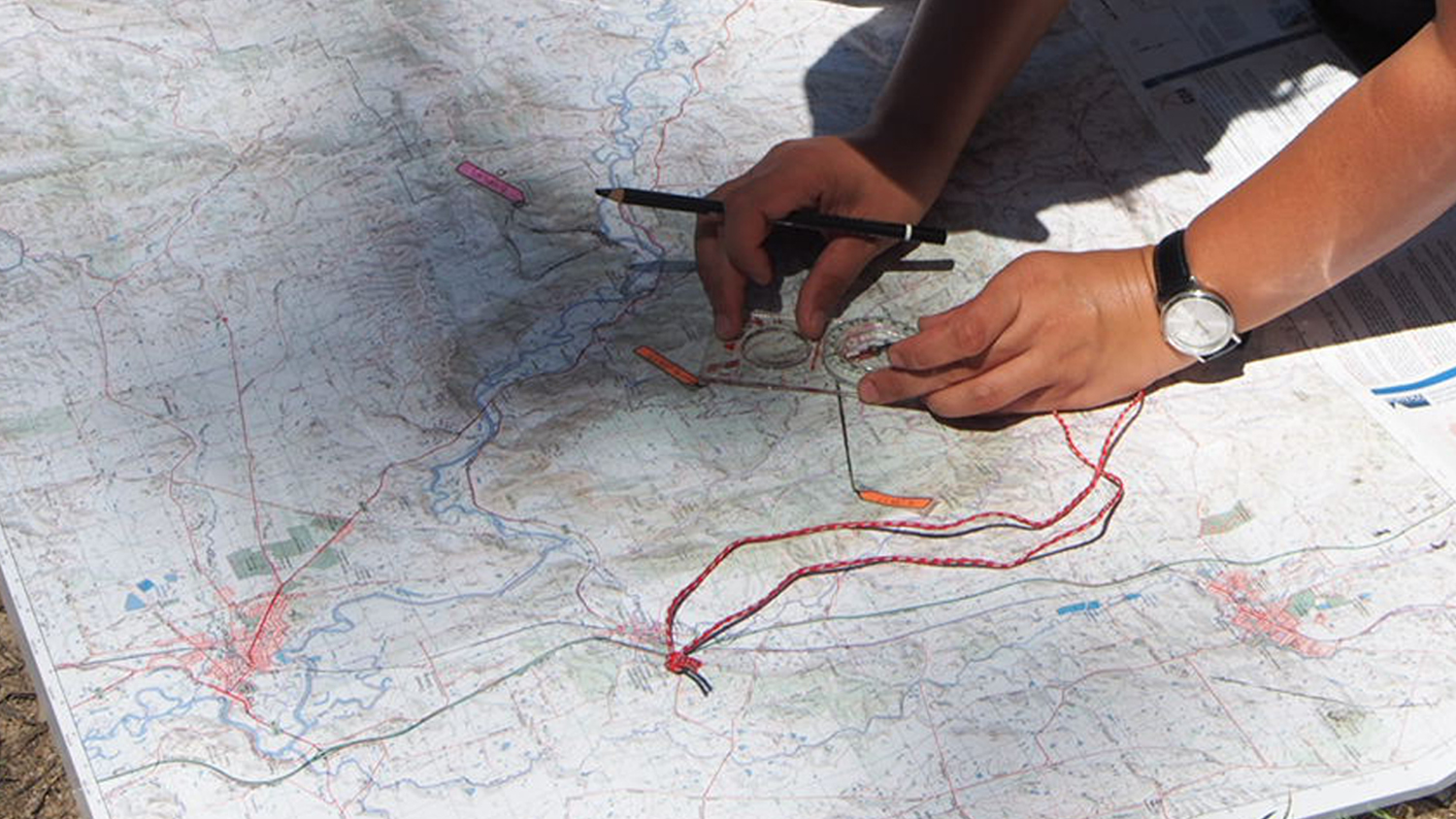Perhaps the simplest situation in which you might use a compass is when you can initially see your destination point but you know that it is not going to remain visible to you on your route to it. This might be because it will become obscured by vegetation or terrain, such as when moving through dense forest or dropping into a valley.
In such a case, it is a matter of working out which direction you need to go in, and then being able to continue in that direction regardless of visibility.
Step 1: Identify the landmark that you want to take the bearing of (i.e., your destination).
Step 2: Hold the compass in front of you, ensuring that it is level and away from any metallic objects, and turn your entire body so that the direction of travel arrow on the compass points directly at the landmark.
Step 3: Rotate the circular bezel of the compass housing so that the red orienting arrow lines up with the red north end of the magnetic needle.
Your magnetic bearing is the number on the circular bezel that is now lined up with the index line (which is an extension of the direction of travel arrow). You can now follow the bearing to your destination.
Note: The accuracy of the bearing depends on how accurately you simultaneously line up the direction of travel arrow with your destination landmark, and the magnetic needle with the orienting arrow lines. Some compasses include a mirror or a prism to make it easier to do these two things at once.
Want to head out on the trails this season, but don't have the confidence to find your way? Join in on one of our Essentials of Navigation Courses.








For the serious athlete, this ultra-tough adventure course has been inspired by the gruelling SAS Selection and is designed to test your mettle.
Click here for details.